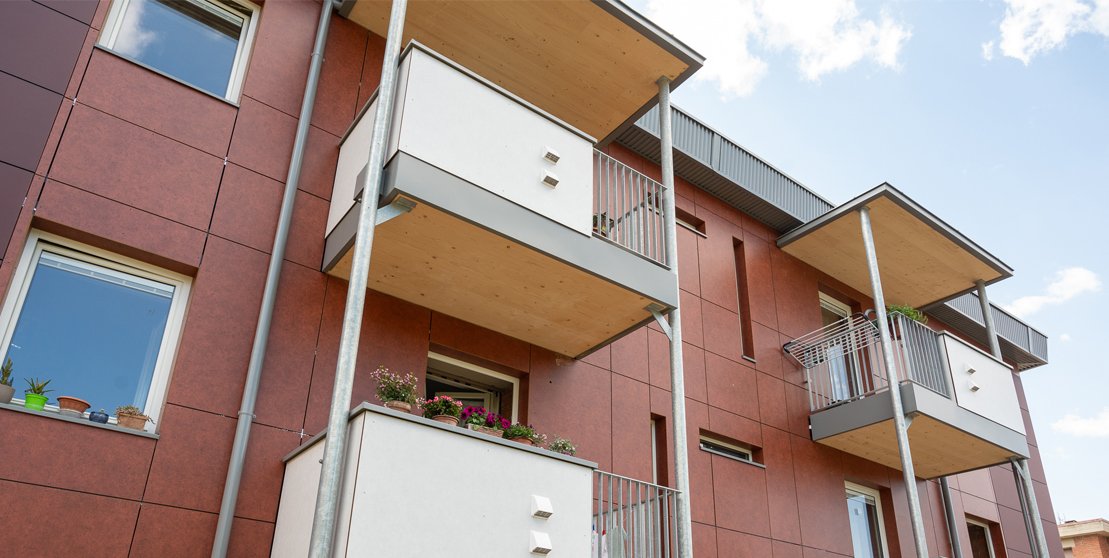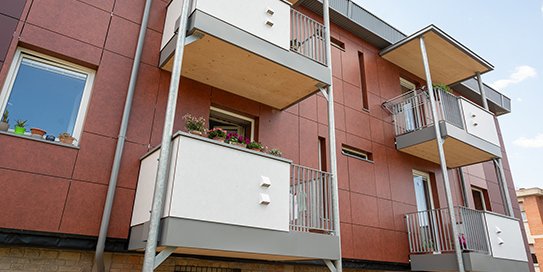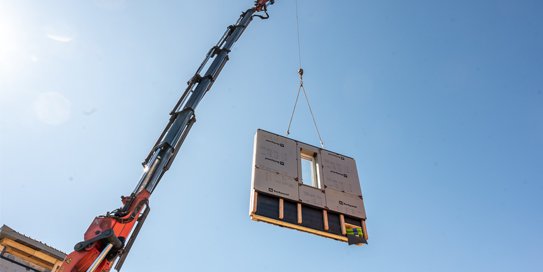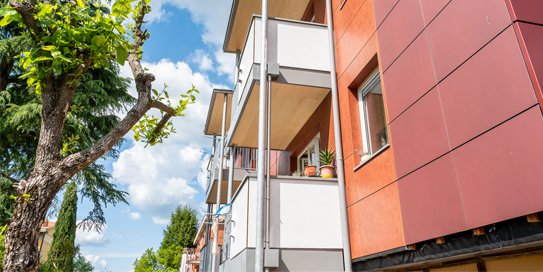Why should building owners choose industrialised deep renovation?
In light of new EU regulations aimed at increasing energy efficiency and reducing greenhouse gas emissions in buildings, industrialised deep renovation offers building owners a great alternative to traditional renovation methods, providing advantages in terms of cost, risk reduction, construction site speed, quality, and sustainability.
Traditional renovation projects are notorious for delays, cost overruns, and disruptions. Industrialised deep renovation (IDR), on the other hand, leverages off-site prefabrication to streamline the process and minimize on-site construction time. At the same time, retrofitting a building with prefabricated components manufactured in a factory setting, ensures a higher level of quality control and precision compared to traditional on-site construction.

Reduced on-site time

IDR can reduce on-site construction time by up to 45%, depending on the level of industrialisation adopted. This minimises disruption to tenants and allows building owners to return their properties to productive use more quickly.
More efficient logistics

Centralized manufacturing improves transportation efficiency and reduces the need for frequent material deliveries to the construction site. This means to lower transportation costs and a smaller environmental footprint.


Renovation speeds up

Factory production and on-site preparation can happen at the same time, speeding up the overall project timeline. Moreover, because much of the work is done in a controlled factory environment, weather-related delays are significantly reduced.
Better quality control

Factory production allows for rigorous quality checks at every stage of the manufacturing process. This will result in less defects and components will meet the required specifications.


More durable components

The use of high-quality materials and advanced construction techniques in a controlled environment leads to more durable and longer-lasting building components. This reduces long-term maintenance costs and extends the lifespan of the building.
Reduced delays due to last-minute changes

The through design process required for off-site prefabrication minimizes the risk of unforeseen changes during construction, which can lead to delays and increased costs.


Less costs, more financial returns

- While the initial cost of prefabricated components may be higher, the overall construction costs can be lower due to reduced on-site work, faster project completion, and minimized delays.
- Moreover, the energy efficiency upgrades achieved through IDR result in significant reductions in energy consumption, leading to lower utility bills for tenants and potentially higher rental income for building owners.
- Energy-efficient buildings with improved aesthetics, comfort, and durability command higher market values, and potentially lower vacancy rates.
- Lastly, financial institutions are increasingly offering favourable loan terms and incentives for sustainable building projects, including those using IDR methods.
Industrialised deep renovation is an approach that delivers significant advantages over traditional renovation methods.
See how prefabricated envelopes are used to retrofit Europe’s buildings.





